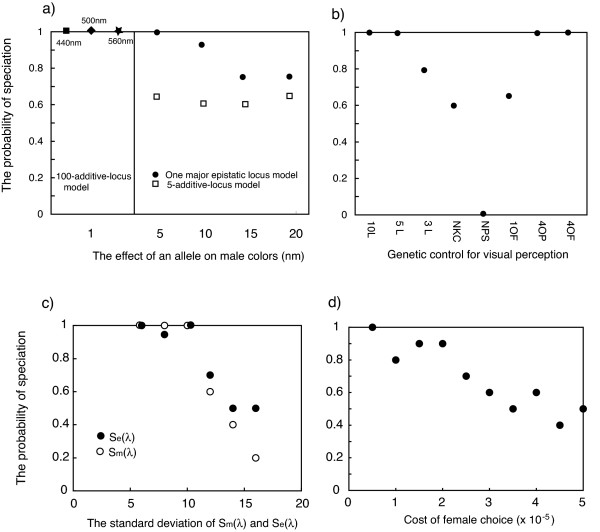Figure 3.
The effects of genetic control of male nuptial color (a), different forms of genetic control of opsin gene differential expression and the number of opsin genes (b), the width of reflectance spectra of male color (Sm(λ)) and predominant environmental color (Se(λ)) (c), and the cost of female choice (d) on the probability of speciation. Habitat size = 1000 × 1000, K = 10, α = 8, μ = 0.00001, M = 100, d = 50, G = 0.10, 5 sites mutation model. Filled square, male nuptial colors controlled by 100 loci (100-additive-locus model), initial nuptial color and peak perception intensity 440 nm; Star, male nuptial colors controlled by 100 loci (100-additive-locus model),, initial nuptial color and peak perception intensity 560 nm; filled diamond, male nuptial colors controlled by 100 loci (100-additive-locus model), initial nuptial color and peak perception intensity 500 nm. Open squares, male nuptial color controlled by 5 loci (5-additive-locus model); filled circles, male nuptial color controlled by 4 additive loci and one major locus (one major epistatic locus model). Male nuptial color was controlled using 100 loci (100-additive-locus model) for b, c, and d. 3L, 5L, and 10L, k (the relative strength of electric signal and/or relative amounts of the three opsin gene expression) controlled by 3, 5 and 10 loci, respectively (3-, 5- and 10-locus model); NCK, No differential expression and no electric signal change model; NPS, No peak shift model; 1OF, One locus on-off switch model; 4OP, 4 opsin genes model; 4OF, 4 opsin genes model with one locus on-off switch model.

